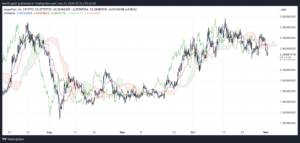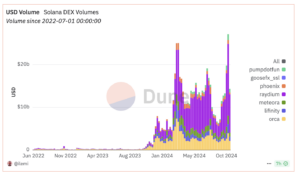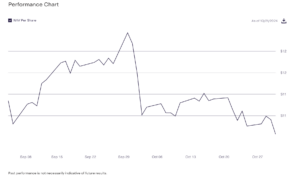

Cryptocurrency has long flirted with a paradox. Blockchain technology enables decentralization and anonymity within an industry that has increasingly embraced regulatory oversight to gain traction with institutional finance and achieve widespread adoption.
The crypto exchange Coinme has embraced this paradox since its launch, building a network of regulated bitcoin ATMs it powers at established retail locations to offer the convenience and trust of a standard ATM or currency exchange transaction with the upside of access to decentralized digital assets.
“We founded Coinme in 2014 because we believed in the power of crypto to help people improve their everyday financial lives,” said CEO and co-founder Neil Bergquist in a recent statement announcing that the company had eclipsed $1 billion in retail sales. “New technologies and asset classes are usually only available to a select few. True to the servant ethos of bitcoin, we’re pleased to have made bitcoin accessible for all.”
Establishing Trust
The company’s origin story traces back to 2013, when Neil Bergquist first caught wind of bitcoin through a Seattle-based startup incubator he was running. As the cryptocurrency’s value soared from $100 to $1,000 that year, he sensed a burgeoning movement. His early venture into the space came in May 2014, when Coinme launched the first licensed bitcoin ATM in the U.S.
“Back then, people would read about [bitcoin], but they’d wonder how do you buy it?” Bergquist recalls[1] . “The way you purchased back then was: You meet a stranger online, go to a coffee shop, give them cash, [and] that person hands you a USB stick with bitcoin on it that they previously mined and then you can say, ‘I just bought bitcoin.’ That was a wholly unregulated, potentially very dangerous process, but consumers didn’t have many options back then.”
The goal behind Coinme’s regulated bitcoin ATMs was to establish credibility in a crypto realm that, especially in the early days, was often misconceived as a hangout for antiestablishment hackers and anarchists. Through partnerships with major providers like Coinstar and MoneyGram, Coinme has been able to bring bitcoin and other crypto to the same malls, grocery stores, and convenience stores that consumers have frequented to access financial services for years.
By adhering to KYC (know your customer) and anti-money laundering protocols, it de-risked the process for both consumers and legacy financial services, adding safeguards that appealed to the sensibilities of those curious about crypto but used to interacting with traditional financial institutions.
“Coinme is a licensed and regulated financial institution, just like the other financial institutions you know and trust,” Bergquist explains. “We do KYC. There’s no anonymity. We do [anti-money laundering], so we have controls and transaction monitoring in place including blockchain monitoring. If you’re trying to send crypto to a wallet that’s deemed too risky, it won’t go through. These basic protections help make crypto safer.”
Building an Accessible Bitcoin ATM Network
This regulatory stamp of approval has unlocked a series of major partnerships for Coinme, giving it access to over 40,000 physical locations worldwide. According to Neil Bergquist, there’s a Coinme kiosk within 5 miles of nearly 90% of the United States population.
“There are more Coinme cash locations than the largest private bank ATM networks or branches,” he says. “So you can actually use cash and buy crypto at more locations in the U.S. than you can deposit cash to the largest bank network ATMs.”
Beyond its physical footprint, Coinme is expanding crypto-as-a-service offerings, aiming to “crypto-enable” existing financial institutions through its enterprise API, Coinme-as-a-Service.
Since November 2022, Coinme has powered the crypto platform for MoneyGram Online, allowing its customers to buy and sell digital assets through the money transfer service’s app.
As the company looks ahead to the next decade, Bergquist envisions a world where Coinme’s crypto-as-a-service platform becomes the connective tissue between legacy finance and decentralized digital money.
“There’s a lot of opportunities to not only sit on your crypto as a long-term store of value, but potentially earn interest through different liquidity pools that exist in DeFi [decentralized finance],” he says, hinting at future use cases like crypto staking.
The institutional embrace comes as the crypto world is still reeling from a series of high-profile failures and scandals, from the implosion of the FTX exchange to the bankruptcies of lenders like Celsius and BlockFi. These events — catalyzed by a late-2022 “crypto winter” that saw the total market capitalization of digital assets plummet from a high of $3 trillion to under $800 billion — cast a pall over the industry and heightened calls for greater oversight.
But for Neil Bergquist, the turbulence only reinforces the importance of Coinme’s regulated, compliant approach — a model he believes is key to unlocking crypto’s vast potential and ushering in broader adoption.
“When in periods of inflation, real assets generally go up in value. Like the value of stocks, real estate, and other things that are tangible, bitcoin has really proven to be a tangible asset, even though a lot of people say it’s intangible,” he says. “But it is tangible, because bitcoin cannot be mimicked or copied. It’s unique. You really have a unique piece of property that you own and has traditionally gone up in value, particularly in times of hyperinflation. It’s also tangible in that at any given time you can redeem it for physical dollars due to the liquidity and market depths of BTC-USD markets. Every day, tens of billions of USD are exchanged for BTC and vice versa. BTC is very tangible.”
This vision of bitcoin as “digital gold” — a hedge against fiat debasement and a store of value akin to precious metals — is one that has gained traction among large institutional investors. Today, asset managers like BlackRock offer crypto trusts catering to this demand, while sovereign wealth funds have allocated portions of their portfolios to bitcoin.
But Coinme’s ambitions extend beyond positioning bitcoin solely as an investment vehicle. Through integrations with the Bitcoin Lightning Network and other layer-2 scaling solutions, Bergquist envisions broader adoption of crypto for everyday payments.
“The Bitcoin Lightning Network allows for instant and near-free transactions,” he says. “Whereas if you send bitcoin on-chain, sometimes it can take 15 minutes and can cost $5 to $10 regardless of the amount. With Bitcoin Lightning, it costs pennies and can be done instantly.”
The company has emphasized speed and utility as it’s grown its network of locations and expanded its service offerings over the years.
“When you go to a Coinme-enabled Coinstar kiosk, you put in your phone number, and it opens your account. You then insert cash, and it deposits the bitcoin into your Coinme wallet,” he explains. “There is no QR code, there’s no scanning, there’s no sending it to a third-party wallet at the time of purchase. We handle that complexity, so it feels more like a familiar deposit experience.







